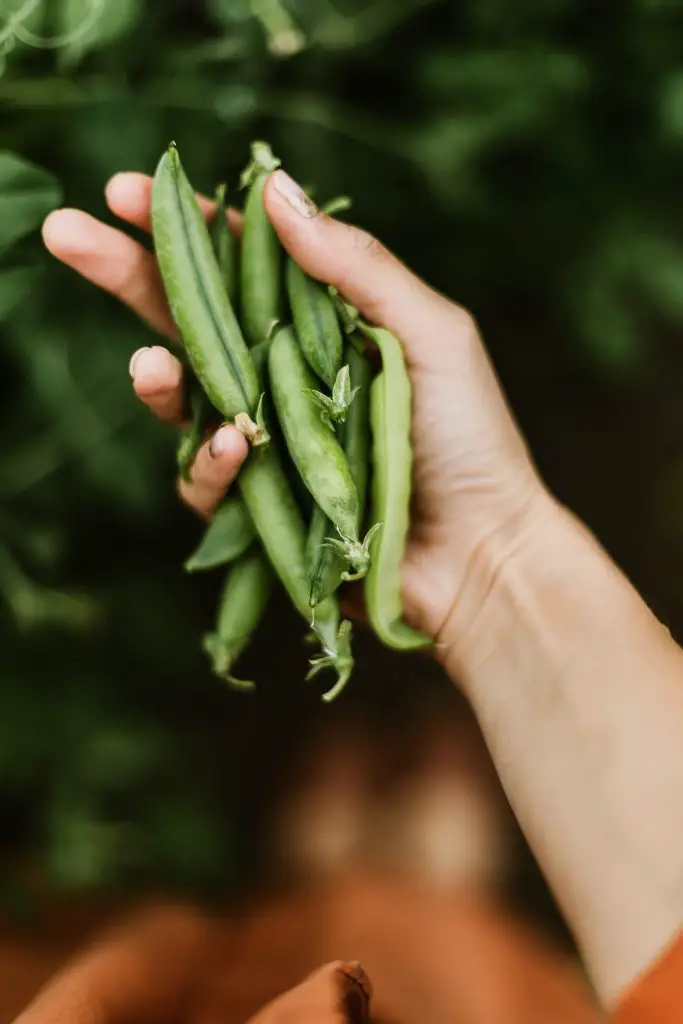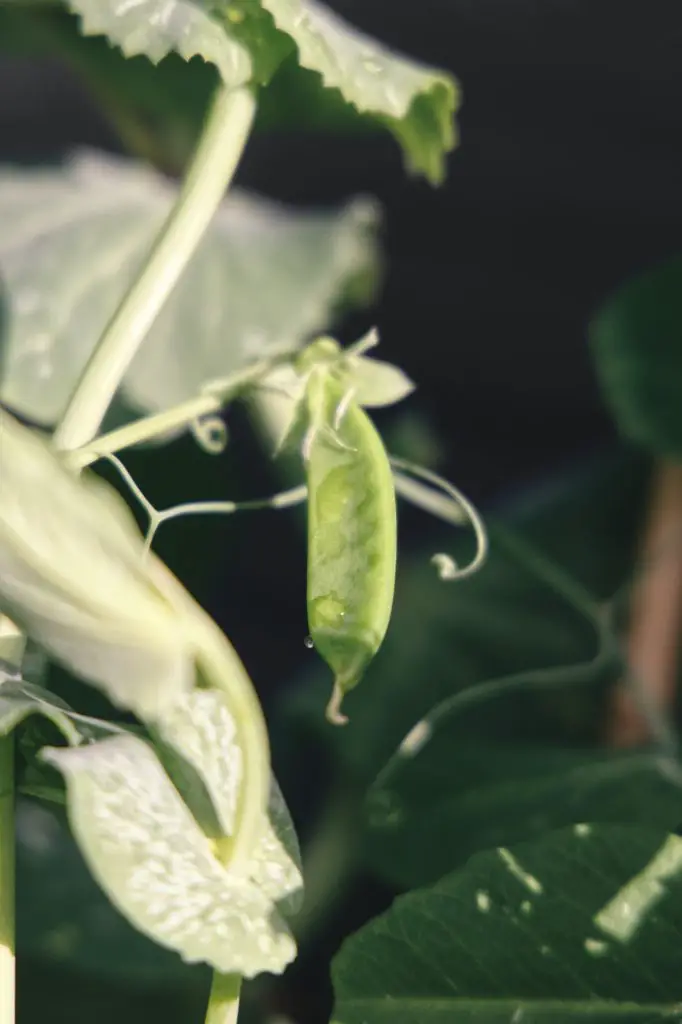Can You Plant Peas From The Grocery Store? If you are thinking about starting your own vegetable garden it need not be expensive as many plants, such as Peas, can be grown easily from seed. However, when purchasing seeds from the gardening section of your local store you will often find that the Peas seed packets don’t contain many seeds and they are relatively expensive.
However, the other location where Pea seeds can be purchased from is in the cooking aisle of the local grocery store, in the form of dried Peas. But will these Pea seeds actually grow?
Dried Peas purchased from the grocery store will germinate readily within a few days of sowing. As dried Peas are at least 10 times cheaper than traditional garden seeds they are ideal for applications where large volumes of seeds are required such as growing Peas shoots or using them as a green manure.
However, the downside of using them is it is impossible to identify the variety or the age of the seeds. This can be somewhat of a problem if the variety is a hybrid seed. Hybrid seeds are seeds produced by crossing two different varieties to create superior performing variety in the first generation of seeds.

These performance characteristics in most cases are not passed down to subsequent generations and can result in some unexpected outcomes. Personally, I haven’t found this too much of a problem but it is something to be aware of. To read more about the difference between heirloom and hybrid seeds click here.
The age of the seeds can also be a potential issue as the germination rate of the seeds falls as the seeds get older. According to Clear Creek Seeds Peas Seeds will remain viable for around 3 years, however, the conditions in which the seeds are stored affect the period of time they remain viable.
This is not something I have has any issues with, the germination rates of Peas seeds that I know were quite old were generally quite high. This is despite the storage condition being far from ideal, seeds are best stored at temperatures below 10°C (50°F). I suspect that actually is in practice much greater than 3 years however if this is a concern a seed viability test may be conducted.
How To Test The Viability Of Pea Seeds
To test the viability of the Pea seeds start by moistening a sheet of paper towel and placing the seeds onto the towel. Then place the damp paper towel into the plastic bag or container and seal it to ensure that seeds remain moist for an extended period of time.
Ensure that the seeds are stored in a warm location somewhere inside, your house is fine, temperatures around 20°C (70°F) are ideal. Wait around 7 days and then check the seeds for signs of germination. If there is no sign of germination wait a few more days and then check again. Generally, if there is no sign of sprouts after 10 days you can assume that the seeds are not viable
If seeds have germinated they can be planted into the soil to continue growing, there is no need to waste them.
How To Grow Peas
Peas are generally a very easy crop to grow as the seeds germinate readily and the plant is tolerant of frost. Peas can tolerate temperatures down to 28°F (-2°C) without any signs of damage. At temperatures between 20°F (-6°C) to 28°F (-2°C) the Peas will survive out in the open garden but will sustain some damage. When protection is provided to the plant in the form of a Frost Blanket Peas can survive temperatures as low as 10°F (-12°C).

The relatively high degree of tolerance to cold enables Peas to be planted in early Spring and late Summer to early Autumn. In regions where the winters are mild the sowing time can be extended to mid-Autumn. The advantage of late plantings is that the plant can be allowed to sit in the garden throughout the winter in preparation for the production of an early crop in spring.
In regions with really cold winters, Peas seeds are normally sown around mid-spring directly into the garden. However, earlier plantings can be done indoors in seed trays. To ensure that there is successful germination it is advisable to use a heated propagation tray.
Controlling the growing environment for the Peas is much easier using a heated propagation tray because the temperature is constant and many units have a cover to maintain a relatively humid environment. The unit we recommend for this purpose is shown in the image below, click here to see the latest price on Amazon.

When sowing Pea seeds they should be placed at a depth of 1 inch (2.5 cm) and if you are planting them in modular trays it is advisable to put two seeds per cell to ensure that all the cells within the tray are occupied. In heated conditions, the Peas will germinate relatively quickly and usually only require 3 to 4 weeks in a tray before they are large enough to be planted out.
Ideally, seedlings should be planted out in the garden when the temperatures exceed 50°F (10°C). The seedling should be spaced approximately 2 to 3 inches (5 to 7cm) apart, at this point, it is also advisable to erect a support structure to avoid disturbing the plants at a later date.
The most common support method used by gardeners is a wire or plastic trellis strung between two garden stakes. The Peas have tendrils that will cling to the structure allowing the vine to climb up the support. However, even though the plant is self-clinging the tendrils are often not sufficient to stop the plant from falling over. To stop the Peas from falling over it is also necessary to tie the Peas to the structure.
Prior to planting it is also important to prepare the soil, the method we generally recommend using the ‘No Dig’ method as it is easy and simple to implement. The method requires a layer of compost, 2 to 4 inches thick to be applied once a year to your garden beds
This layer, which best applied in Autumn, provides all the nutrients required for the entire year. The additional benefit of this method is that it reduces the volume of work required in the garden because the compost acts as a mulch suppressing weeds and retaining moisture. To read more about this method click here.
Harvesting Peas
Once the plant becomes established the vine will begin to produce flowers from which flat 2 dimensional pods will begin to appear. Overtime these the pods will fatten to the point where they are slightly thicker than a pencil. At this stage, it is worth opening up a pod or two to see if the Peas have reached a reasonable size.
Once the peas have reached a reasonable size it is important to pick the Peas every few days as this will encourage the plant to continue to produce new flowers and pods. Pea plants will continue to produce as long as the temperatures remain moderate, between 50°F to 85°F (10°C to 26°C). At temperatures below 50°F, the vine will stop producing flowers and at temperatures above 80°F, the vine will die back.
If you are interested in growing the plants for just the shoots watch the video below by Alys Fowler as it has plenty of tips on how to maintain a supply of shoots even in the worst of weather.
Collecting Pea Seeds
Once you have started growing Peas seeds in your garden it is extremely easy to collect large volumes of seeds for the following year which negates the need to purchase seeds altogether.
To collect seeds you simply need to let the plant flower and it will create pods. Overtime those pods will swell due to the formation of seeds within them. The seed pods can be picked when the pods are ripe, however, I find that this not necessary. Pea pods can just be left on the plant until it dies back.
At this stage, the plant will begin to change colour from green to a straw colour. The pods can be removed from the plant whole and left to dry on a shelf somewhere. The Peas seeds can then be removed sometime later, this can be done at any stage prior to planting as it will not affect the germination rate.
It should be noted that the traditional approach to planting seeds, in general, is to dry them first before replanting. However, Pea seeds do not appear to need to have a period of dormancy before resprouting. I have had Peas self seed almost immediately in my garden and I have also seen reports of Peas germinating in the pods in very wet weather. So they can be planted immediately if necessary.
